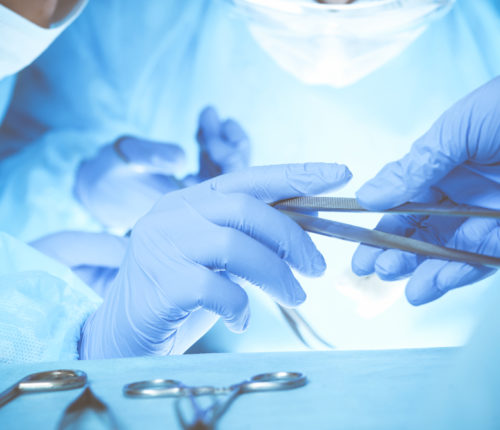
Surgery For Birth Injuries
Depending upon the type of birth injury an infant experiences, surgery may be one of the best treatment options. Although it’s worrisome to think of babies and young children undergoing an invasive procedure, it may be the only type of treatment that can relieve symptoms and promote healing. In the majority of cases, surgery for birth injuries is successful.
Types of Surgery for Birth Injuries
There are various birth injuries that may necessitate surgery as a treatment option. Below, we discuss some of those injuries and why surgery may be an option.
Surgery for Brain and Head Trauma
If an infant has brain damage or head trauma, such as an intracranial hemorrhage and/or a skull fracture, surgery may be a recommended treatment option. Surgery for infant brain and head trauma generally includes:
- Surgical decompression
- Craniotomy drainage
- Surgical debridement
- Surgical evacuation
- Decompressive craniotomy
According to the National Institutes of Health (NIH), the most common area for surgery for infants with brain and head trauma is the top portion of the head, above the ears. For babies under 3 to 6 months of age, a couple of small cuts are made into the scalp, usually around one inch long. The physician may then use an endoscope to observe the injuries.
Afterward, the physician uses specialized medical devices to remove some of the infant’s skull and begin the surgery. This specific type of surgery usually only lasts around an hour and much less blood is lost compared to other types of surgeries. The NIH recommends that if an infant needs surgery, it should be performed before six months of age.
Surgery for Brachial Plexus Injuries and Erb’s Palsy
Surgery is typically the last resort for infants with Erb’s palsy, but if the disorder is severe, this may be the only option. Nerve grafting is the most common type of surgery for Erb’s palsy and other brachial plexus injuries. Nerve grafting consists of reconstructing the damaged brachial plexus nerves with a nerve graft. According to the Brachial Plexus Center of the Washington School of Medicine, the C5 and C6 nerves are generally the most damaged nerves.
In some cases, the C7 root is damaged, with 74 percent of injuries occurring in the upper brachial plexus. The damaged nerves are generally treated by nerve grafting, but neurolysis, neurotization or a combination of all three may be used.
In a study of 241 infants who had surgery on the C5 and C6 nerves, 81 percent of the patients were able to lift their shoulders higher than 90 degrees. For infants who had surgery on the C5, C6 and C7 nerves, around 76 percent could lift their shoulders higher than 90 degrees. If an infant had total brachial plexus injuries, 66 percent were able to lift their shoulders higher than 90 degrees while 30 percent were able to exhibit hand function.
Cerebral Palsy
Some infants with severe cases of cerebral palsy may require surgery to help diminish severe muscle stiffness and spasms. Surgery can also provide more control over muscle flexibility and improve mobility. There are generally two types of surgeries for cerebral palsy: orthopedic surgery and selective dorsal rhizotomy (SDR).
Orthopedic Surgery
Orthopedic surgery helps to increase range of motion. This type of surgery entails lengthening a tendon and cutting through the tendon or muscle in order to attach an additional tendon. In some instances, an additional tendon is attached to a bone.
Selective Dorsal Rhizotomy
SDR helps with mobility issues. It is one of the most common types of surgery for cerebral palsy. It helps to relieve muscle tightness and spasticity in the legs. SDR surgery entails cutting a portion of the sensory nerve fibers that are attached to the muscles that enter the spinal cord.
To begin, the physician generally divides the dorsal roots into several rootlets and then electrically stimulates each one. The muscle responses are then examined via electromyographic responses (EMG). Afterward, the rootlets that are causing the spasticity and motor issues can be cut, and the normal rootlets left intact. Along with decreasing the chances of leg deformity, SDR also helps patients to move their legs better.
Other Types of Surgery for Cerebral Palsy
In some cases, infants and children with cerebral palsy may undergo surgery for medical-related issues. For those who need continuous medication, a small pump may be implanted surgically into the abdominal region, under the skin. The pump then disperses medication routinely. Baclofen is the most popular type of medication used for patients who have a surgical medicine pump.
There is a common debate among physicians as to when babies and children with cerebral palsy should receive surgery. Some doctors feel that surgery should be performed at a young age, while others think that all other treatments should be exhausted before doing surgery. It’s important to discuss all options with your doctor to figure out the best options for your child.
What Happens After Surgery?
After surgery, infants and children with birth injuries generally start physical therapy and/or occupational therapy. Your child may need special equipment when starting therapy, such as a splint or cast. In most instances, physical therapy will start right away after surgery, and on average, lasts around six months.
Ultimately, how long your child needs therapy will depend on his or her overall health and how well they respond to the surgery itself and the therapies.



